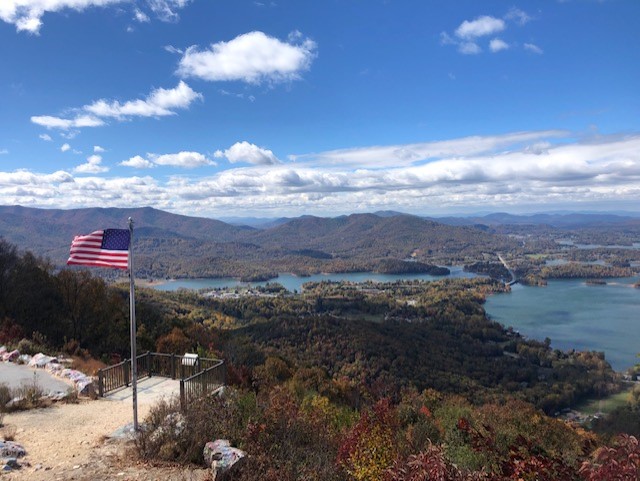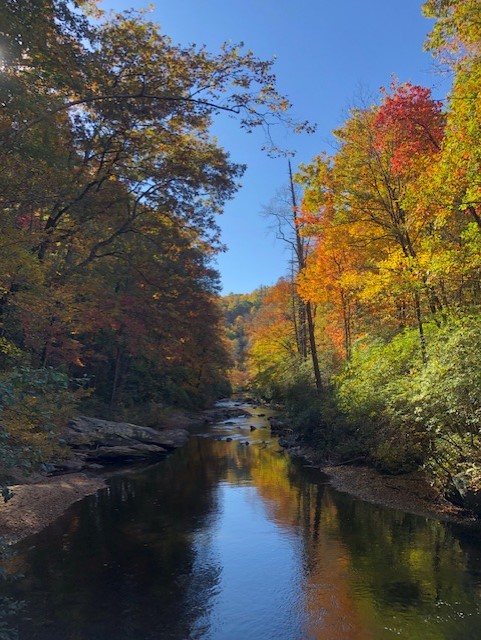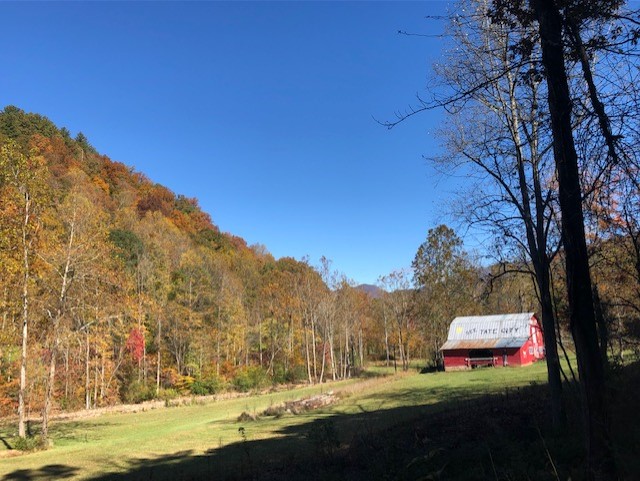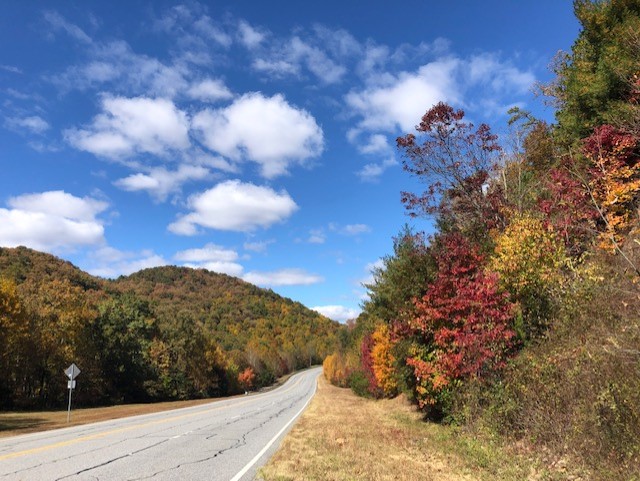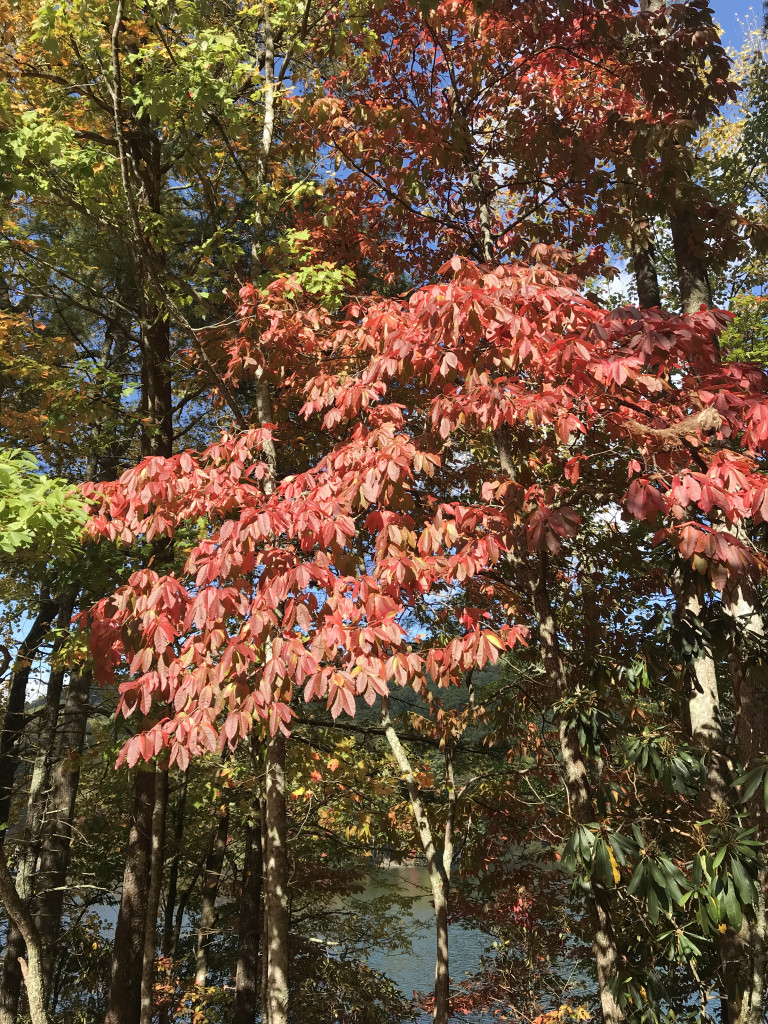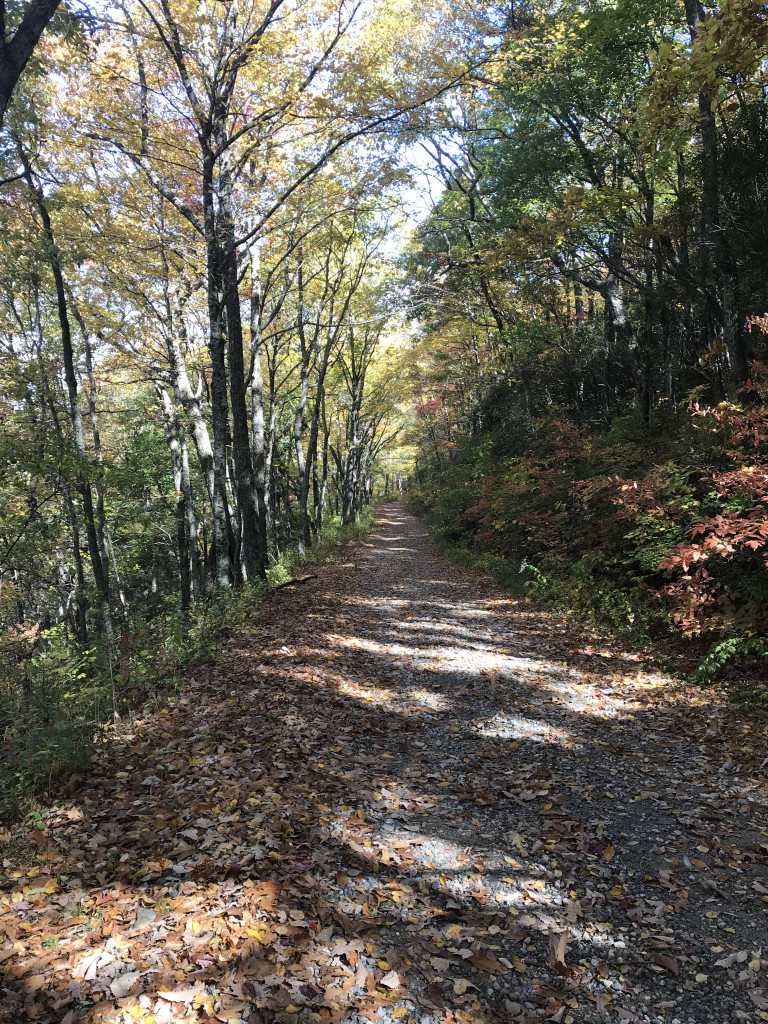Northwest GA Specific (Ridge and Valley/Cumberland Plateau):
Overall color vividness and continuity will be determined mainly by future weather events within the season. Rainfall and wind intensity in the following months will determine how good of a season we can expect. Multiple moderate to severe storms will lead to premature leaf fall and less overall color. Leaf retention has been good so far.
Views from overlooks and valleys have shifted from dark green to light green with small patches of faint yellows and maroons. The tops of ridges and peaks have noticeably more color than the slopes and valleys below. The areas on top of the Cumberland Plateau show unique colors.
Maple and sourwood are primarily responsible for most spots with high color intensities of red or yellow. Sweetgum also provides a few areas of color, showing occasional shades of dull red and brown but still mostly green. Oak, birch, hickory, and poplar are starting to shed leaves and showing faint shades of yellow and brown. Dogwood appears to be the first species to offer the most significant color changes at all elevations, as it has already transformed from green to a mix of dull reds and yellows. Sumac within the understory has recently begun displaying a variety of reds.
Overlooks and ridges are still primarily green but continue to display larger red, orange, and yellow patches as the season progresses. The peaks and higher areas of Fort Mountain show significant colors while the mountain’s base remains green. Driving anywhere on Lookout Mountain will yield the best colors this week as elevation is sustained on top of the plateau.
The overall color change is approximately 50% above 2000 feet and 25% below 2000 feet.
Species specifics:
- Maple – Becoming deep red and yellow.
- Yellow poplar – Shifting to yellow, bronze, or gold.
- Sumac – Green fading to red.
- Beech – Green with golden edges.
- Dogwood – Vivid red beginning to dull.
- Sourwood – Shifting from green to vivid shades of red.
- Sassafras – Green with hints of orange.
- Sweetgum – Shifting from green to red and yellow.
- Blackgum – Green fading to red and yellow.
- Redbud – Shifting from green to yellow.
- Birch – Rapidly shifting to yellow and gold.
- Oak – Green fading to light green and bright orange.
- Hickory – Green fading to yellow or brown.
Estimated percentage of color change from green to date: 50% above 3000 feet and 25% below 3000 feet.
This area has had sufficient rainfall over the summer, and forest health appears to be very good overall. Average temperatures have been slightly higher, leading to a later peak season. Expect the first week of November to be the peak.
Scenic NW drive:
Route 1: Take Hwy 136 from i75 to Hwy 341. Turn left on Hwy 341 / Hog Jawl Road. Continue on Hog Jawl through Mountain Cove Farms and up Daughtery Gap to Hwy 157. Turn right on Hwy 157. Turn right on Scenic Hwy 189 (or continue on Hwy 136 to Cloudland Canyon State Park). Follow Hwy 189 to Sunset Rock, Point Park, or Rock City. Drop down into Chattanooga via Ochs Hwy / 58. Turn right on Hwy 193 to get back to Hwy 136.
For the best route in current traffic, visit https://maps.app.goo.gl/zTYdn6a9Ve6EhPW58.
Route 2: Take Hwy 52 from Chatsworth to Ellijay (this route passes Fort Mountain State Park). From Ellijay, head West on Hwy 76 back to Hwy 411 (or head North on Hwy 76 into Blue Ridge).
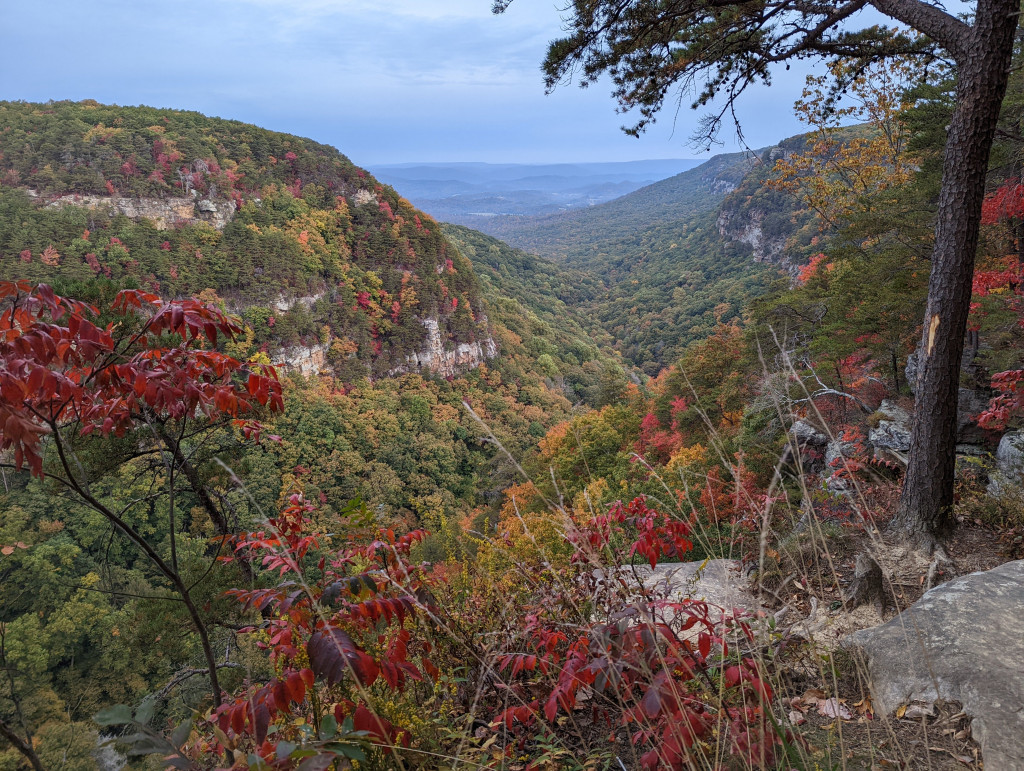
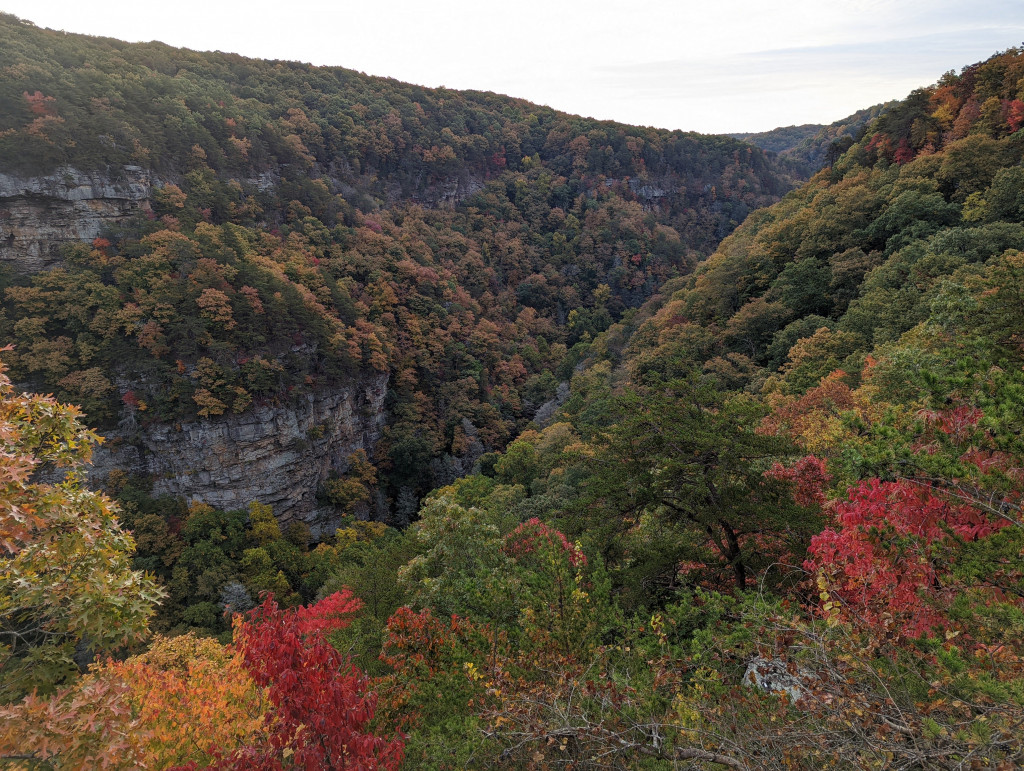
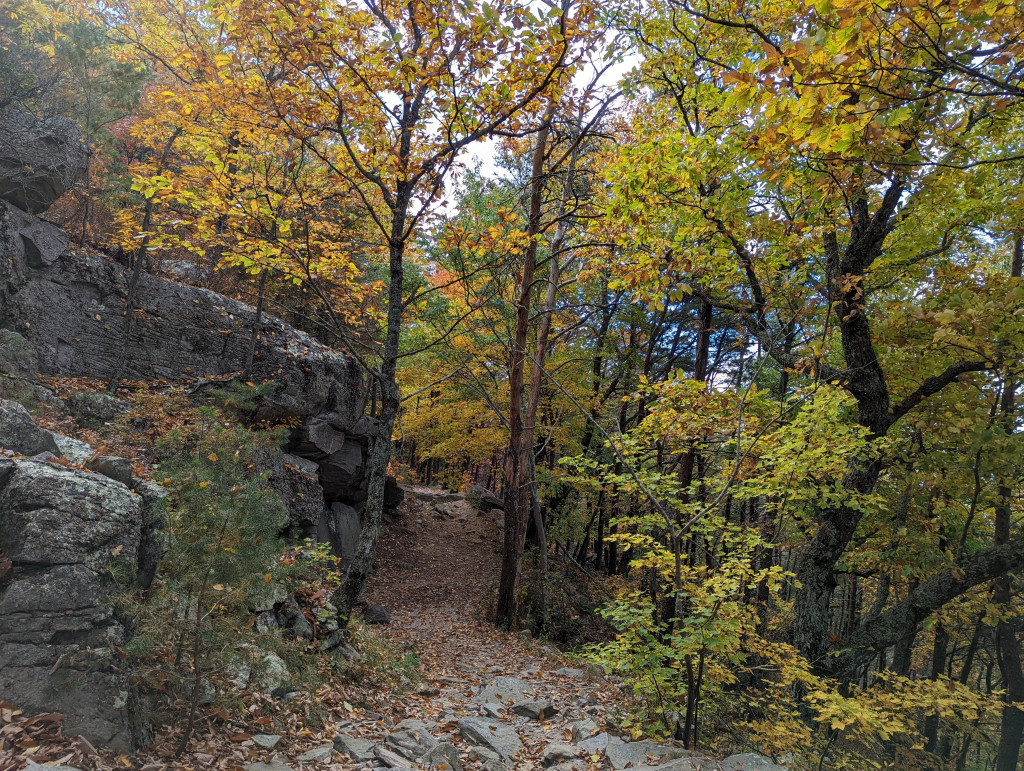

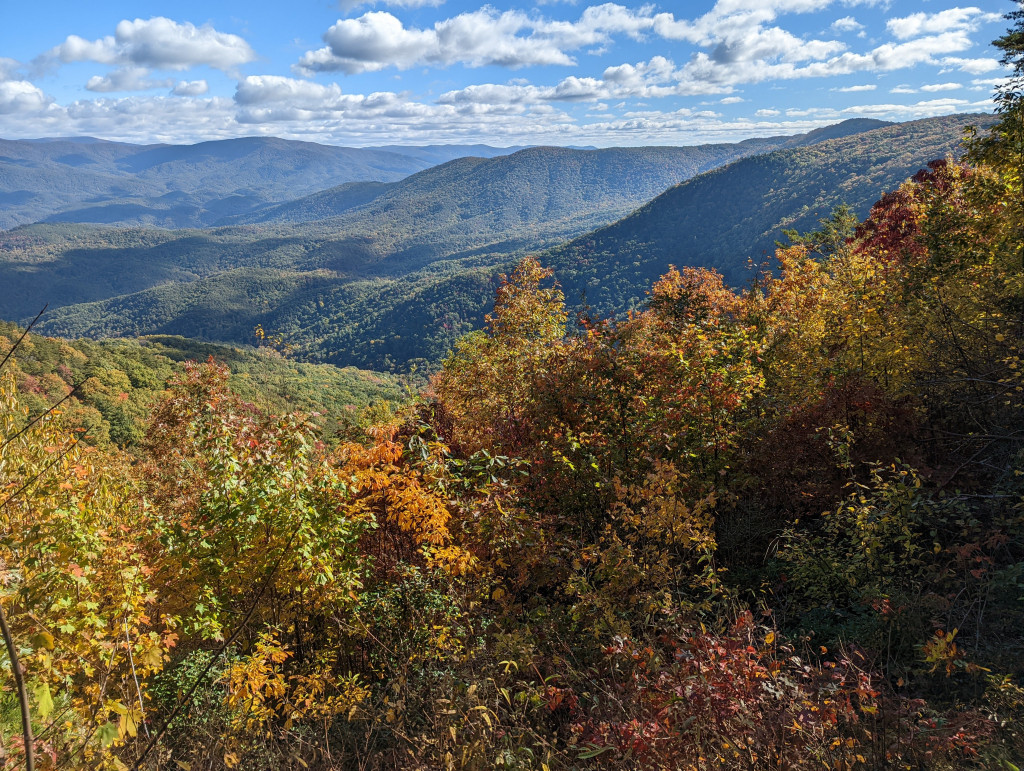
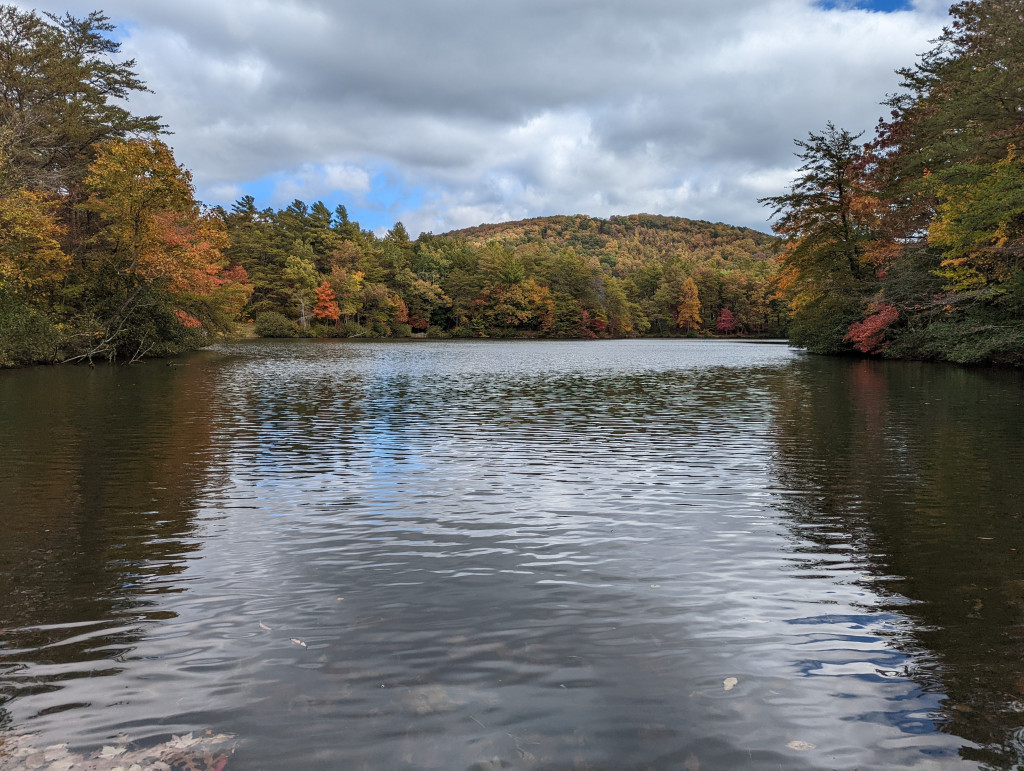
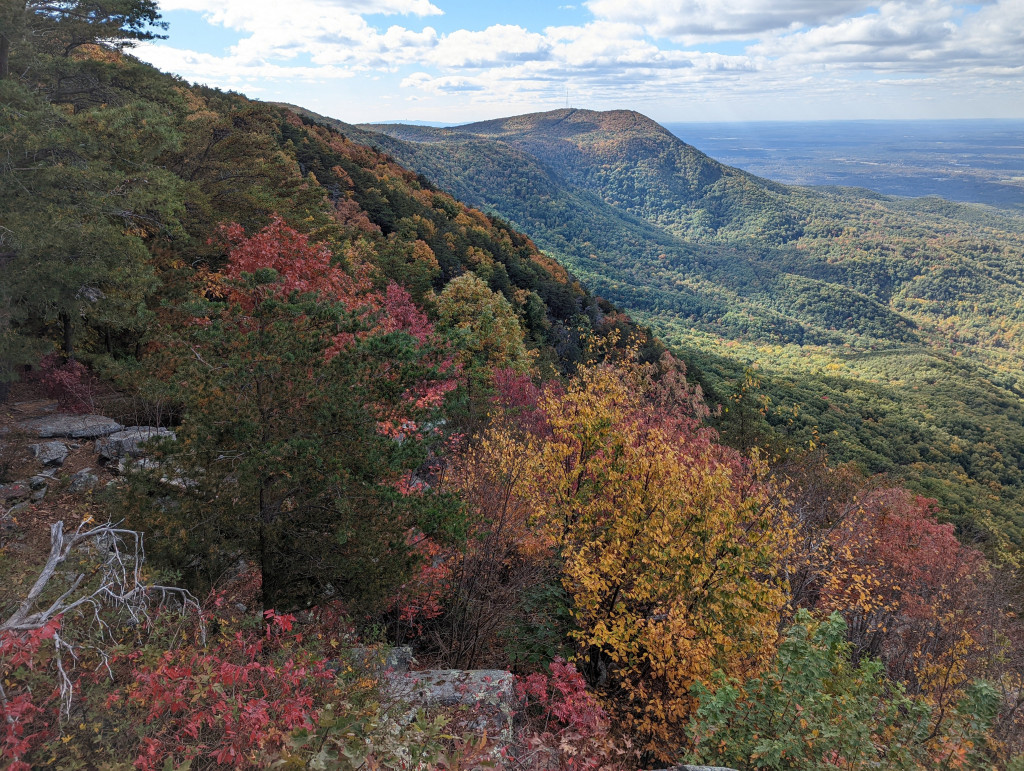
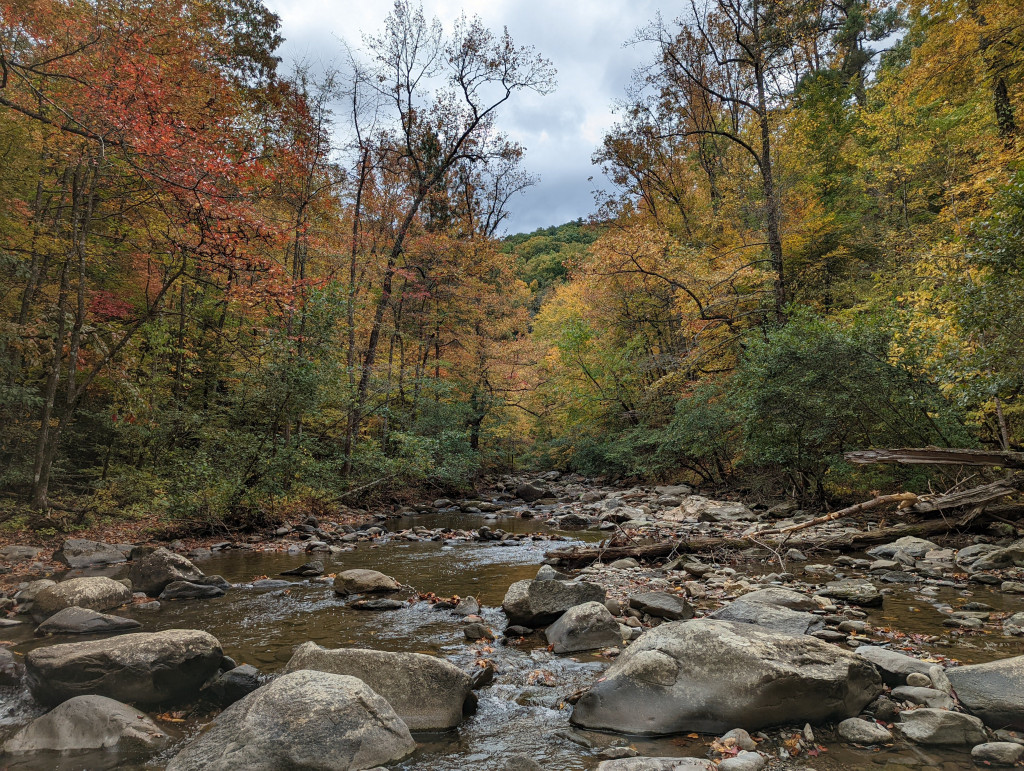
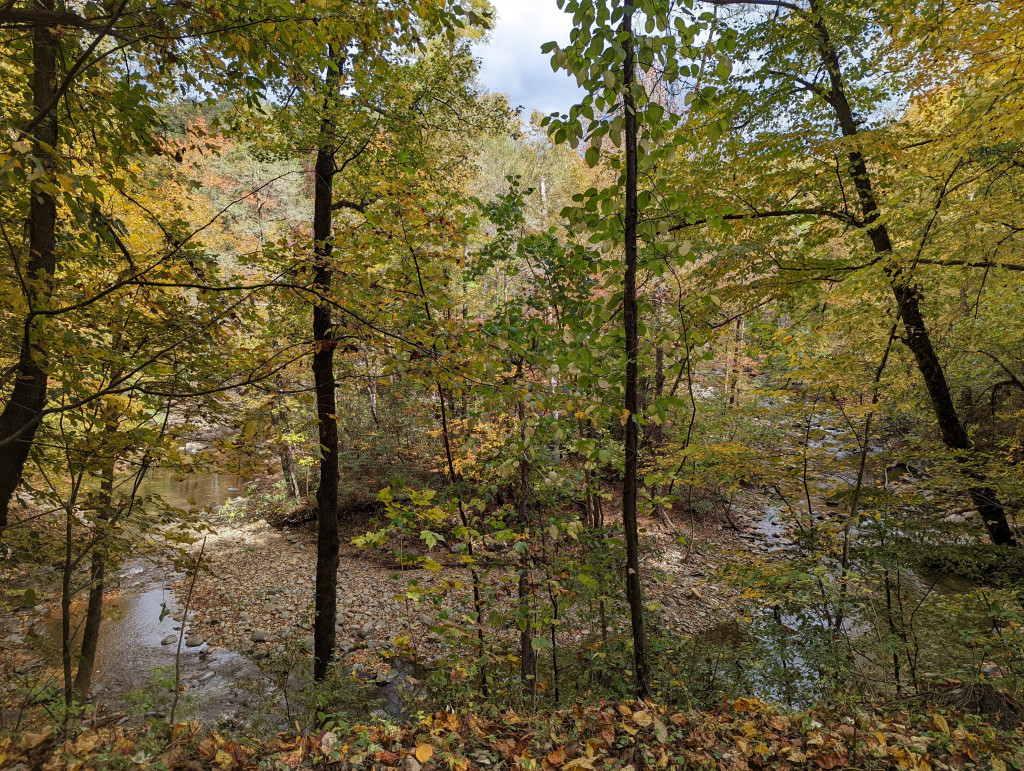
North Central GA:
Now is the time to make a day trip or weekend getaway to the majestic north Georgia Mountains. The higher elevations above 3,000 feet currently provide gorgeous yellow, gold, and red displays. The river corridors are also magnificent, but species such as poplar, birch, sycamore, walnut, and gums are beginning to fade and surpass peak in many locales. Above 3,000 feet, birch, poplar, and blackgum are also starting to fade and become past peak. The highest elevations in Georgia above 4,000 feet are now past pea but still offer good color over the next week. Many oak species above 2,500 – 3,000 feet are beginning to transform and brighten the landscape. Sourwood, dogwood, maples, and sassafras continue to provide spectacular shades of red and orange, as many of these species have a long peak fall foliage season.
The oak species are primarily green at this time but beginning to show early signs of yellow, orange, and red. The different species of oaks should progress rapidly over the next several weeks.
Species specifics:
- Maple – Yellow, orange, and red.
- Yellow poplar – Yellow and brown are fading.
- Dogwood – Red and burgundy.
- Sourwood – Red.
- Sweetgum – Yellow, purple, and red.
- Blackgum – Orange and red beginning to fade.
- Birch – Yellow is beginning to fade and become past peak.
- Sassafras – Yellow, orange, and red.
- Oak – Yellow, red, and scarlet in mid and upper elevations
- Sumac – Red and orange fading.
- Redbud – Yellow
- Hickory – Yellow.
Estimated percentage of color change from green to date: approximately 80% above 3000 feet and 50% below 3000 feet.
Tuesday brought abnormally chilly and gusty conditions, bringing down a decent number of leaves. We anticipate widespread frosty and freezing temperatures across all of north Georgia on Wednesday and Thursday. The freezing temperatures should help to accelerate leaf color change in lower elevations but could also possibly shorten the duration of peak color.
Scenic NC Drive:
Taking U.S. HWY 76 from Blairsville to Hiawassee and stopping by Bell Mountain Park and Historic Site provides an excellent option for viewing fall colors. Bell Mountain Park offers stunning views of the surrounding mountains and the fantastic scenery of Lake Chatuge in the valley below. If you continue East on U.S. HWY 76, stop by Popcorn Overlook to catch a view of mountain vistas to the North. If you do not mind traveling off the beaten path, Tate City is a breathtaking scenic mountain drive to an unincorporated mountain community with views of the Tallulah River. Make sure to have the destination dialed into your GPS, as there is no cell service in this isolated mountain community!
Northeast GA:
Overstory trees in elevations above 3000 feet show a significant change, with most having some extent of color change. Higher elevations exhibit a lot of gold/yellow from poplar, hickories, and some oaks. Other oaks are showing red on the tips and lightening of the rest of their leaves. Oaks are entering the early stages of the peak period, while maple, sourwood, dogwood, and gums are well into the peak period. Elevations below 3000 feet show spotty color changes with oaks and maples. Dogwood, sourwood, and gums are within peak periods. Many river corridors are beginning to fade, with sycamore, birch, and poplar starting to defoliate, but enough color should remain for the next week to maintain an appeal.
Most of the non-oak species have begun changing color to some extent. This includes sweet gum, black gum, birches, dogwood, poplar, and sourwood, for the most part. Due to the habitat these species occupy, there is more color along river corridors, roadsides, and the understory than in higher elevations, where oaks make up most of the composition.
Species specifics:
- Maple – Red and yellow.
- Yellow poplar – Yellow and brown.
- Sumac – Red fading.
- Beech – Some yellowing.
- Dogwood – Red and burgundy.
- Sourwood – Red with dull to bright hues.
- Sassafras – Yellow.
- Sweetgum – Yellow, purple, and red.
- Blackgum – Red.
- Redbud – Yellow.
- Birch – Yellow fading.
- Oak – Yellowing, red on tips, and some red.
- Hickory – Yellow.
Estimated percentage of color change from green to date: 75% above 3000 feet and 55% below 3000 feet.
Conditions are still on the tract for the primary attractant of oak tree leaf color change. Lack of rain had stressed species like sweetgum, sycamore, blackgum, and yellow poplar, which has led to premature leaf cast for some individual trees. This stress was removed from the oaks with the much-needed rain received last week. With temperatures expected to dip below freezing, mid-week color change should accelerate. I hope the peak should occur the last week of October for oaks. We are in the tail end of peak for species like yellow poplar, sycamore, yellow birch, and blackgum. We are also in mid-peak for dogwood and sourwood. These species have a much more extended peak period than many other species.
Scenic NE Drive:
Highway 348 (Richard B. Russell Scenic Highway) is an excellent option at this time, especially if visiting the town of Helen and Blairsville. Historically color change is a little more evident in the eastern part of the state first and then progress westward. You will also see more differences in Northern facing slopes before other aspects.


